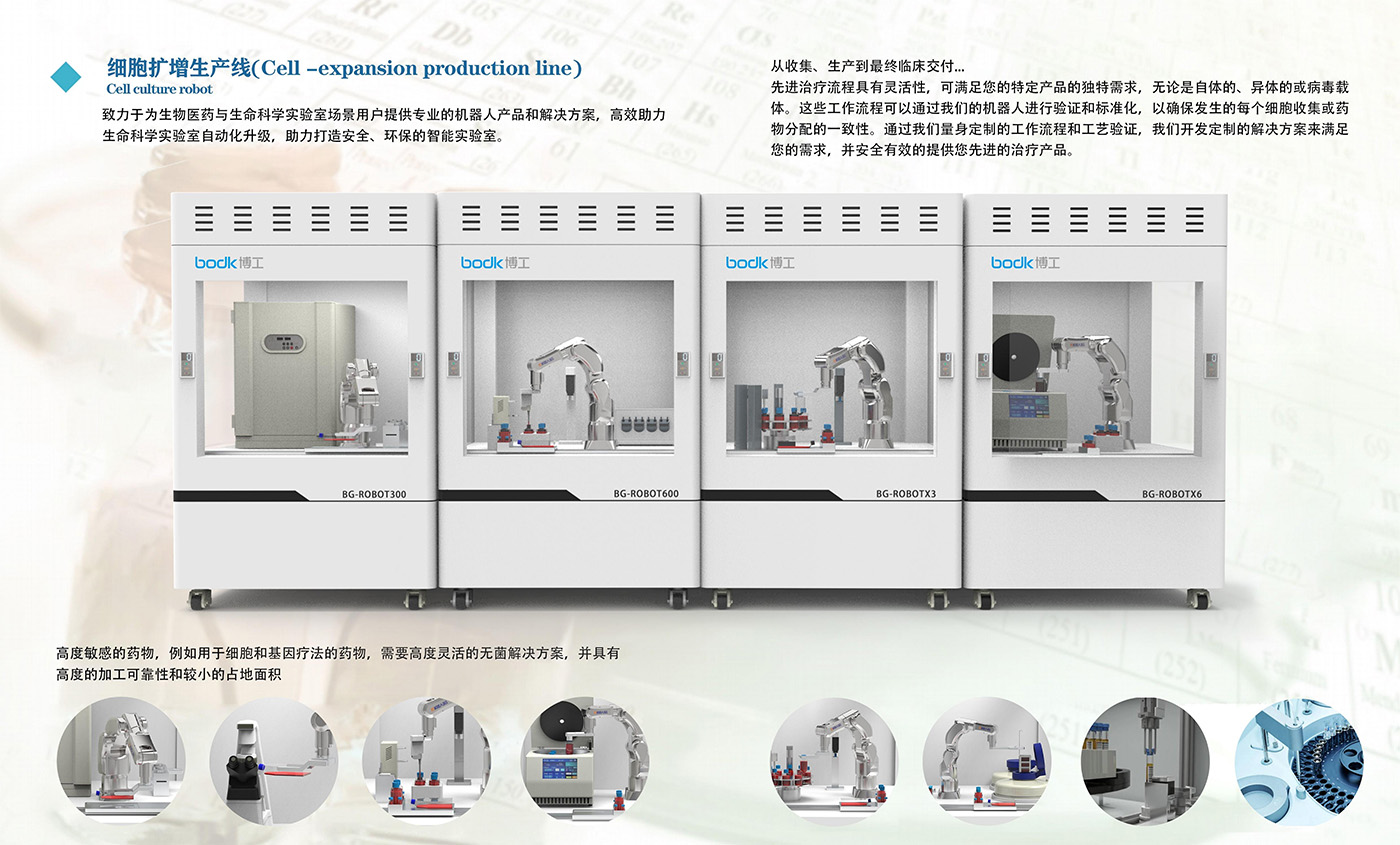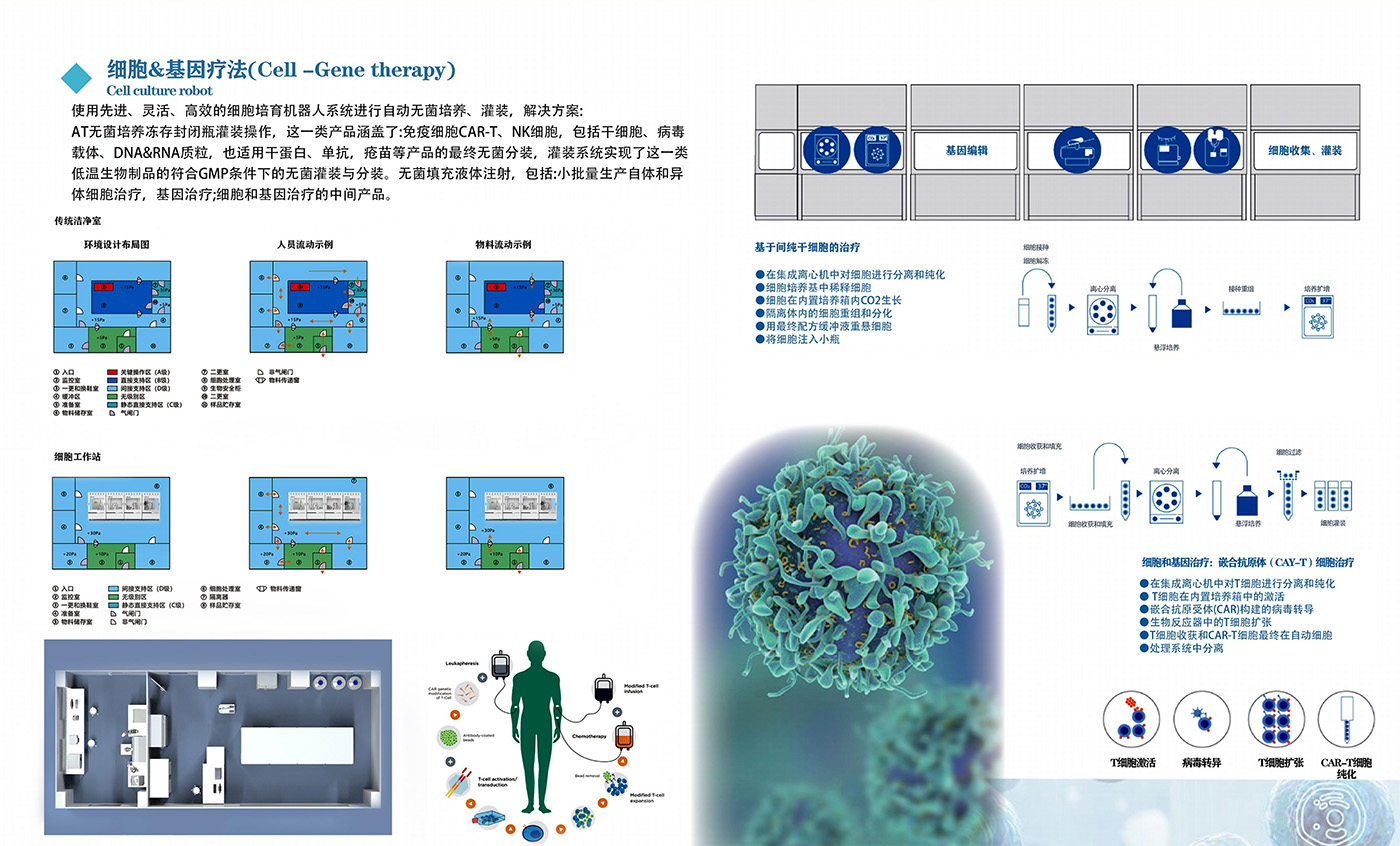Designed for busy cell laboratories and biological laboratories to create an automatic culture system, through intelligent robots instead of artificial repetitive operation, to solve the problem of repeated access to culture utensils in the process of life science experiments, reduce the contact between personnel and culture utensils, to ensure a clean and safe operating experiment environment.

Provide one-stop solution
01
Compatible with adherent cell and suspension cell culture
02
High precision, reducing the difference between different batches of cells
03
The CO_2, temperature and humidity in the cavity have good uniformity
Upstream program
Cell thawing, cell isolation, cell inoculation, cell culture (centrifugation and incubation), gene editing, cell reprogramming, and differentiation
Midstream program
Cell expansion (bioreactor, T-bottle, shaker, multilayer attachment system)
Downstream program
Cell purification (cell purifier/separator), cell filtration, cell aseptic filling and capping, cell freezing


